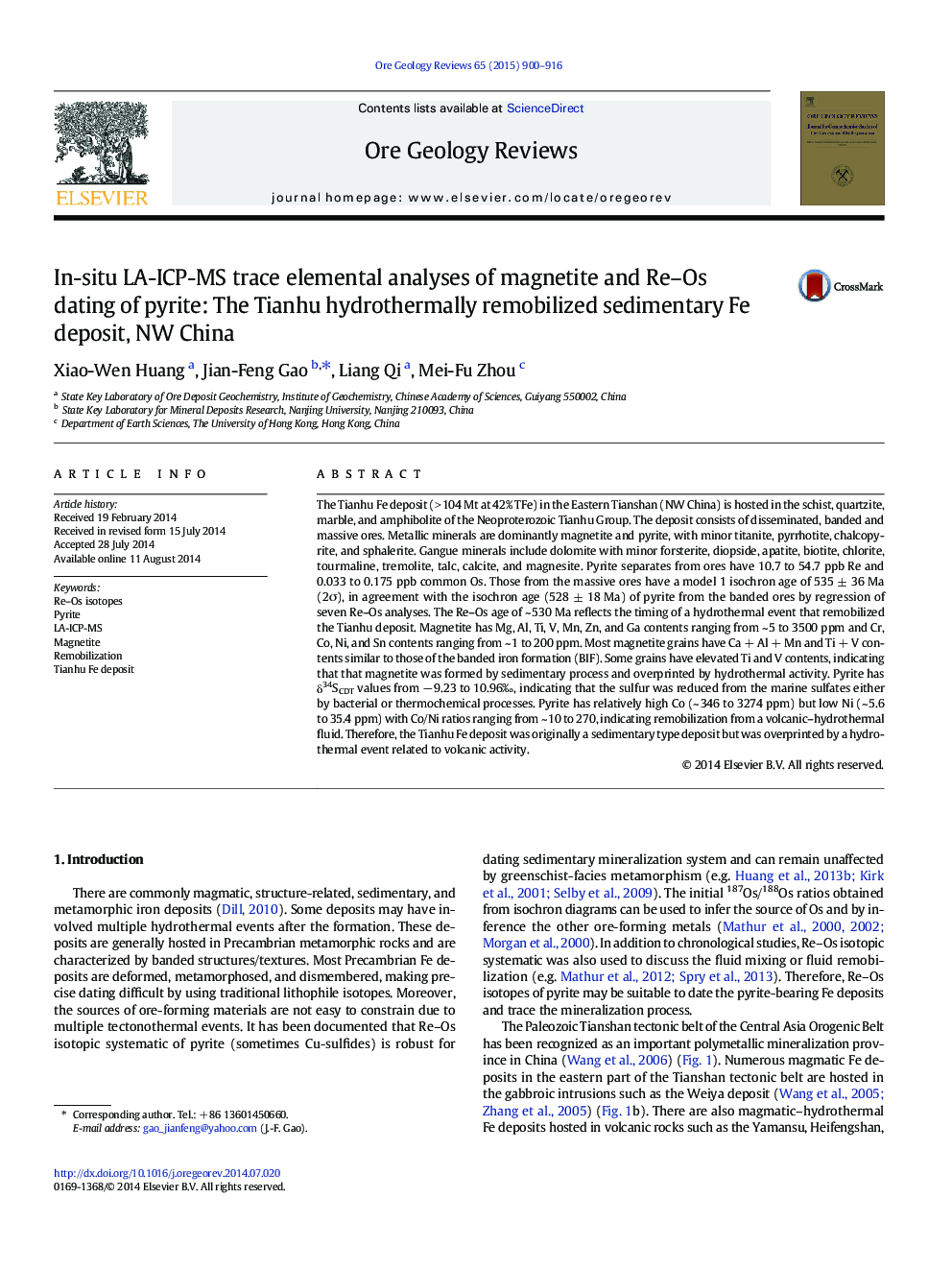| Article ID | Journal | Published Year | Pages | File Type |
|---|---|---|---|---|
| 4697150 | Ore Geology Reviews | 2015 | 17 Pages |
The Tianhu Fe deposit (> 104 Mt at 42% TFe) in the Eastern Tianshan (NW China) is hosted in the schist, quartzite, marble, and amphibolite of the Neoproterozoic Tianhu Group. The deposit consists of disseminated, banded and massive ores. Metallic minerals are dominantly magnetite and pyrite, with minor titanite, pyrrhotite, chalcopyrite, and sphalerite. Gangue minerals include dolomite with minor forsterite, diopside, apatite, biotite, chlorite, tourmaline, tremolite, talc, calcite, and magnesite. Pyrite separates from ores have 10.7 to 54.7 ppb Re and 0.033 to 0.175 ppb common Os. Those from the massive ores have a model 1 isochron age of 535 ± 36 Ma (2σ), in agreement with the isochron age (528 ± 18 Ma) of pyrite from the banded ores by regression of seven Re–Os analyses. The Re–Os age of ~ 530 Ma reflects the timing of a hydrothermal event that remobilized the Tianhu deposit. Magnetite has Mg, Al, Ti, V, Mn, Zn, and Ga contents ranging from ~ 5 to 3500 ppm and Cr, Co, Ni, and Sn contents ranging from ~ 1 to 200 ppm. Most magnetite grains have Ca + Al + Mn and Ti + V contents similar to those of the banded iron formation (BIF). Some grains have elevated Ti and V contents, indicating that that magnetite was formed by sedimentary process and overprinted by hydrothermal activity. Pyrite has δ34SCDT values from − 9.23 to 10.96‰, indicating that the sulfur was reduced from the marine sulfates either by bacterial or thermochemical processes. Pyrite has relatively high Co (~ 346 to 3274 ppm) but low Ni (~ 5.6 to 35.4 ppm) with Co/Ni ratios ranging from ~ 10 to 270, indicating remobilization from a volcanic–hydrothermal fluid. Therefore, the Tianhu Fe deposit was originally a sedimentary type deposit but was overprinted by a hydrothermal event related to volcanic activity.
